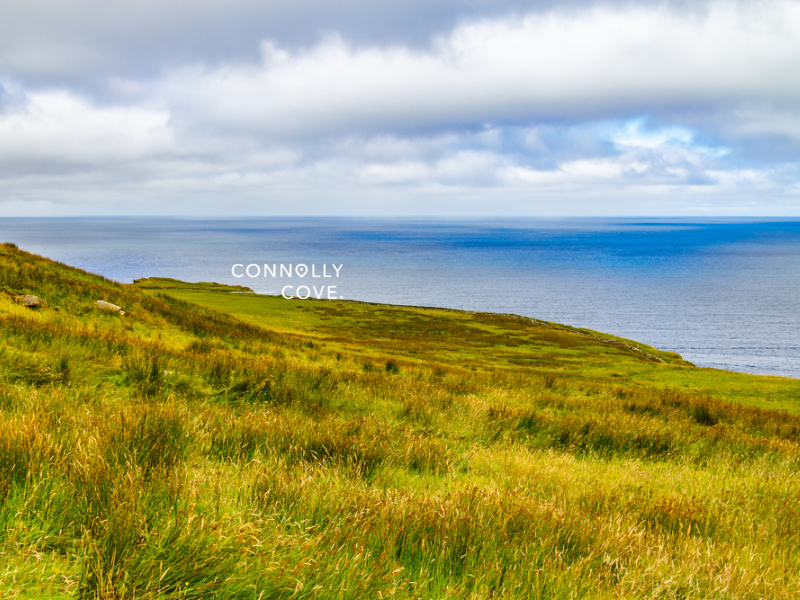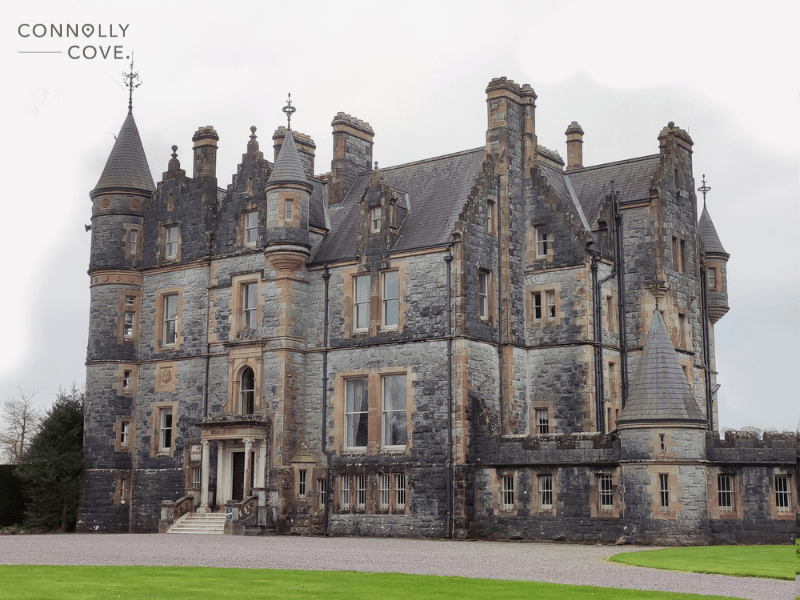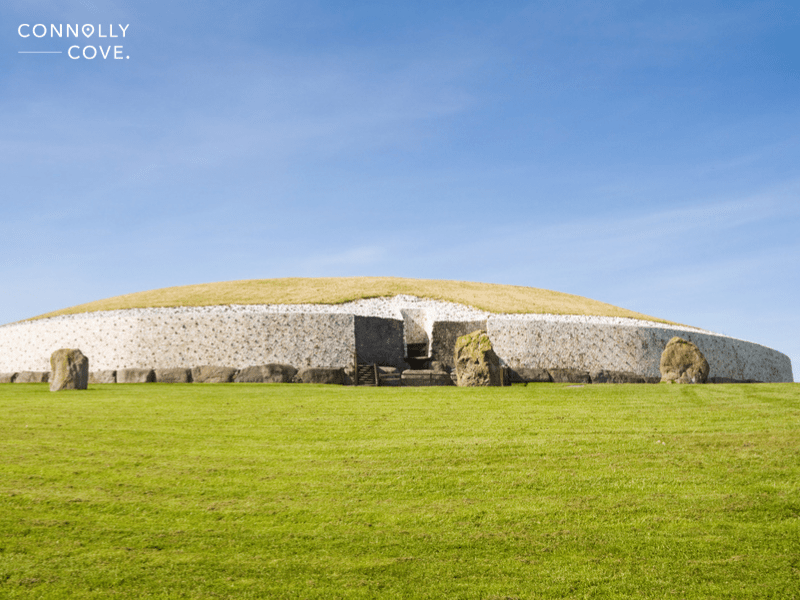Discover the Best of Ireland’s Landscapes

Updated On: April 22, 2024 by Fatma Mohamed
Ireland, often called the Emerald Isle, promises travellers with its enchanting natural beauty. Ireland’s landscape is like a haven for nature lovers.
From the rugged cliffs that stand guard over the Atlantic Ocean to the verdant, rolling hills that define its countryside, Ireland’s landscape is as diverse as it is captivating.
This journey through Ireland’s scenic wonders will reveal the unique character of its coastal vistas, majestic mountains, historic ruins, and lush valleys. Whether you’re a nature lover, history enthusiast, or simply seeking tranquillity, the landscapes of Ireland promise an unforgettable experience, where every view tells a story.
What Are the Key Features of Ireland’s Landscape?
Explore the quintessential elements that define Ireland’s landscape, a tapestry rich in diversity and beauty. The Irish natural scenery is captivating, from the dramatic seaside cliffs and rough seascapes to the iconic rolling green hills and pastoral countryside.
Additionally, the country is dotted with ancient castles and ruins, reflecting its deep historical roots. The landscape also features a network of sparkling rivers and serene lakes, contributing to the lushness of the terrain.
What Are Five Facts About Ireland?
- Ancient History: Ireland is home to Newgrange, a prehistoric monument older than the Egyptian pyramids.
- Literary Legacy: Ireland has produced several Nobel Prize-winning authors, including W.B. Yeats, Samuel Beckett, and George Bernard Shaw.
- Natural Beauty: The island is known as the “Emerald Isle” for its lush green landscapes and dramatic cliffs.
- Cultural Celebrations: St. Patrick’s Day, originating in Ireland, is celebrated worldwide.
- Language: Irish Gaelic is the country’s first official language, alongside English, with unique regional dialects.
Where Are the Most Breathtaking Landscapes in Ireland?
Ireland’s breathtaking landscapes are spread across the country, and each corner offers unique and stunning vistas:
- Cliffs of Moher, County Clare: These cliffs offer fantastic views over the Atlantic Ocean. The dramatic drop into the ocean makes this one of Ireland’s most visited natural attractions.
- Ring of Kerry, County Kerry: This scenic drive encapsulates Ireland’s quintessential beauty with its combination of oceanic views, rich green hills, and historical landmarks.
- Giant’s Causeway, County Antrim: A UNESCO World Heritage site famous for its unique basalt columns formed by ancient volcanic eruptions, this landscape is steeped in myth and natural wonder.
- Connemara National Park, County Galway: Known for its sweeping bogs, heather-covered moorlands, and rugged mountains, Connemara is a haven for nature lovers and hikers.
- The Burren: This distinct karst landscape features limestone pavements with cracks, creating a unique terrain that hosts a variety of plants and ancient archaeological sites.
These locations capture the essence of Ireland’s natural beauty, from impressive seaside cliffs and rolling green hills to unique geological formations, each contributing to the country’s reputation as a land of scenic wonder.
Discover the Coastal Beauty of Ireland
For those seeking to experience the shoreward beauty of Ireland, there are several captivating options to explore. Ireland’s coastline, a mesmerising stretch of natural grandeur, is home to some of the most impressive seascapes in the world.
The Wild Atlantic Way, a winding route along the rough Irish West coast, offers breathtaking views of the Atlantic’s untamed beauty. Another beautiful wonder is the Cliffs of Moher. It’s towering around 700 feet above the ocean and provides awe-inspiring vistas that have captivated visitors for centuries. Further north, the Giant’s Causeway is a testament to Ireland’s geological and mythical heritage, with its thousands of hexagonal basalt columns creating an otherworldly landscape.
These coastal landmarks are natural wonders deeply woven into Irish culture and folklore. Each site tells a tale, from ancient legends of giants and mermaids to real stories of battles and emigration, making them integral to understanding Ireland’s unique cultural identity.
Discover Ireland’s Other Top Attractions
Ireland’s landscape is not only marked by its natural beauty but also by its wealth of historical and cultural sites. Visiting ancient castles like Blarney Castle provides a glimpse into Ireland’s storied past, where folklore and history intertwine.
In Dublin, Ireland’s capital, you can explore the rich literary history at places like the Trinity College Library and immerse yourself in the vibrant local music and arts scene. Galway, known as the Cultural Heart of Ireland, offers a blend of traditional Irish music, theatre, and unique cultural festivals. These destinations allow visitors to experience the depth of Ireland’s historical roots and contemporary culture.
Historical Landmarks
Ireland’s landscape is dotted with historical landmarks that span centuries, each telling a unique story of the nation’s rich heritage.
Blarney Castle

Ireland’s landscape is dotted with historical landmarks that span centuries, each telling a unique story of the nation’s rich heritage.
One of the most iconic landmarks is Blarney Castle in County Cork, home to the legendary Blarney Stone. The castle, built over 600 years ago, is a staple of Irish history and mythology.
According to legend, kissing the Blarney stone grants “The Gift of Eloquence” or, more commonly, “The Gift of Gab”. We propose that every man on earth be required to kiss the Blarney stone.
Newgrange

A prehistoric monument in County Meath predates Stonehenge and the Egyptian Pyramids, showcasing Ireland’s ancient civilisation.
Newgrange, located in County Meath, Ireland, is a remarkable prehistoric monument dating back to about 3200 BC, making it older than Stonehenge and the Egyptian Pyramids. This ancient passage tomb is part of the Brú na Bóinne complex, a UNESCO World Heritage site. Newgrange is renowned for its architectural precision, particularly its alignment with the winter solstice sunrise. On the shortest day of the year, sunlight illuminates the inner chamber through a roof-box opening, revealing intricate stone carvings and artwork. This monument provides invaluable insights into Neolithic art, spirituality, and engineering, representing a significant part of Ireland’s ancient civilisation.
Dublin Castle
The castle, once the heart of British rule in Ireland, now serves as a major Irish government complex. Its history is a microcosm of the country’s turbulent past. Dublin Castle, located in the heart of Ireland’s capital, is steeped in history. The building was initially constructed in the early 13th century on land that the Vikings previously inhabited. It was the administrative centre for the English and later British governments in Ireland for centuries.
The castle is a significant Irish government complex and a tourist attraction today. It hosts critical State receptions and Presidential Inaugurations, showcasing the blend of medieval and modern architecture. The castle’s rich history reflects the country’s journey from colonial rule to independent nationhood, symbolising Irish heritage and resilience.
Kilmainham Gaol
The gaol in Dublin tells the poignant story of Ireland’s struggle for independence. Kilmainham Gaol is a powerful symbol of the Irish struggle for independence. Built in 1796, it has housed many notable figures involved in pursuing Irish freedom.
The jail became infamous for the harsh treatment of its prisoners, often political dissidents, especially during the Irish War of Independence. Kilmainham’s execution of the leaders of the 1916 Easter Rising had a profound impact on the Irish psyche, influencing public opinion towards independence. Today, it serves as a museum, preserving the stories of sacrifice and resilience crucial in shaping modern Ireland.
Cultural Spots
Ireland is prosperous in cultural spots, with Dublin’s Trinity College, home to the historic Book of Kells, epitomising the nation’s deep literary roots. The country is also renowned for its traditional music, best experienced in the lively pubs of Galway, a city known for its vibrant arts scene and cultural festivals.
Trinity College
Trinity College, founded in 1592, is Ireland’s oldest university. It’s one of the most prestigious higher education institutions in Europe. Located in the heart of Dublin, it is renowned for its historic campus, distinguished alums, and cultural significance.
The college’s library is home to the Book of Kells, an iconic medieval manuscript famous for ornate illustrations and significant in Irish history and culture. Trinity College is also known for its contributions to literature, science, and politics, shaping many influential figures in Irish and global history.
The National Gallery of Ireland
The gallery is a premier art museum housing an extensive Irish and European art collection. Opened in 1864, it has over 16,000 artworks. The artefacts include oil paintings, drawings, sculptures, and works on paper. The gallery’s collection spans from the 13th to the 20th century, featuring works by renowned artists such as Caravaggio, Vermeer, Monet, and Jack B. Yeats. The gallery is also known for hosting special exhibitions and educational programs, making it a central cultural institution in Ireland and a must-visit for art enthusiasts.
Bunratty Castle and Folk Park
Bunratty Castle and Folk Park, located in County Clare, Ireland, is a remarkable 15th-century castle and living history museum. The castle, one of Ireland’s most complete and authentic medieval fortresses, has been restored to its former glory and is furnished with period pieces. The adjacent Folk Park offers a glimpse into Irish life in the 19th century, featuring a recreated village with cottages, a school, and a post office. Visitors can explore the castle, enjoy traditional Irish meals, and experience various cultural events and reenactments, making it a unique and immersive way to understand Irish history and heritage.
Cobh
Cobh, located in County Cork, Ireland, is a picturesque coastal town known for its rich marine history. It was the last port of call for the RMS Titanic before its ill-fated voyage in 1912. Historically, the town is known as Queenstown.
Cobh was also a significant departure point for millions of Irish emigrants during the 19th and early 20th centuries. Today, the Cobh Heritage Centre tells the story of Irish emigration and the town’s links to the Titanic and Lusitania. Cobh’s waterfront, lined with colourful Victorian houses, offers panoramic views of Cork Harbour, one of the largest natural harbours in the world.
FAQs
What Is Ireland Famous For?
Ireland is renowned for its rich cultural heritage, stunning landscapes, and historical landmarks. The country is celebrated as the Emerald Isle for its luxuriant greenery, and it features iconic natural spots. It’s celebrated for its contributions to literature globally.
When Is the Best Time To Visit Ireland To See Its Landscapes?
The best time to visit Ireland to experience its stunning landscapes is during the late spring to early summer (May to June) and early fall (September to October). These periods offer mild weather, making it ideal for exploring the outdoors and witnessing the lush greenery or autumn colours.






